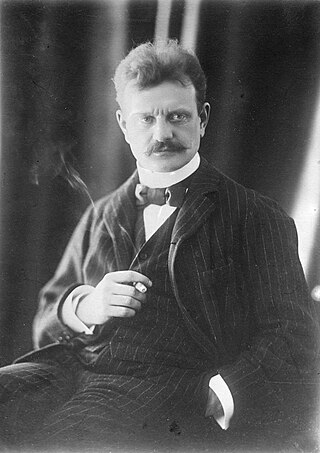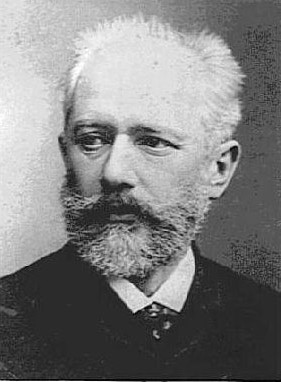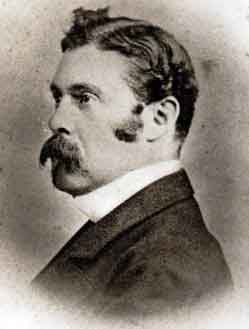
The Symphony No. 1 in E minor, Op. 39, is a four-movement work for orchestra written from 1898 to 1899 by the Finnish composer Jean Sibelius.

Asger Hamerik (Hammerich) was a Danish composer of the late romantic period. Aged 80 at time of death.

The Symphony No. 2 in D major, Op. 43, is a four-movement work for orchestra written from 1901 to 1902 by the Finnish composer Jean Sibelius.

Pyotr Ilyich Tchaikovsky's Symphony No. 4 in F minor, Op. 36, was written between 1877 and 1878. Its first performance was at a Russian Musical Society concert in Moscow on February 22, 1878, with Nikolai Rubinstein as conductor. In Central Europe it sometimes receives the nickname "Fatum", or "Fate".

Pyotr Ilyich Tchaikovsky's Symphony No. 3 in D major, Op. 29, was written in 1875. He began it at Vladimir Shilovsky's estate at Ussovo on 5 June and finished on 1 August at Verbovka. Dedicated to Shilovsky, the work is unique in Tchaikovsky's symphonic output in two ways: it is the only one of his seven symphonies in a major key ; and it is the only one to contain five movements.

Pyotr Ilyich Tchaikovsky wrote his Symphony No. 1 in G minor, Winter Daydreams , Op. 13, in 1866, just after he accepted a professorship at the Moscow Conservatory: it is the composer's earliest notable work. The composer's brother Modest claimed this work cost Tchaikovsky more labor and suffering than any of his other works. Even so, he remained fond of it, writing to his patroness Nadezhda von Meck in 1883 that "although it is in many ways very immature, yet fundamentally it has more substance and is better than any of my other more mature works." He dedicated the symphony to Nikolai Rubinstein.
The Symphony No. 2 in C minor, Op. 17 by Pyotr Ilyich Tchaikovsky was composed in 1872. One of Tchaikovsky's joyful compositions, it was successful right from its premiere and also won the favor of the group of nationalistic Russian composers known as "The Five", led by Mily Balakirev. Because Tchaikovsky used three Ukrainian folk songs to great effect in this symphony, it was nicknamed the "Little Russian" by Nikolay Kashkin, a friend of the composer as well as a well-known musical critic in Moscow. Ukraine was at that time frequently called "Little Russia". According to historian Harlow Robinson, "Kashkin suggested the moniker in his 1896 book Memories of Tchaikovsky."

Pyotr Ilyich Tchaikovsky's Piano Concerto No. 3 in E-flat major was at first conceived by him as a symphony in the same key. But he abandoned that idea, jetisoned all but the planned first movement, and reworked this in 1893 as a one-movement Allegro brillante for piano and orchestra. His last completed work, it was duly published as Opus 75 the next year, after he died, but given by publisher Jurgenson the title "Concerto No. 3 pour Piano avec accompagnement d'Orchestre".
The Concert Fantasia in G, Op. 56, for piano and orchestra, was written by Pyotr Ilyich Tchaikovsky between June and October 1884. It was premiered in Moscow on 6 March [O.S. 22 February] 1885, with Sergei Taneyev as soloist and Max Erdmannsdörfer conducting. The Concert Fantasia received many performances in the first 20 years of its existence. It then disappeared from the repertoire and lay virtually unperformed for many years, but underwent a revival in the latter part of the 20th century.
Pyotr Ilyich Tchaikovsky's Symphony in E-flat was commenced after Symphony No. 5, and was intended initially to be the composer's next symphony. Tchaikovsky abandoned this work in 1892, only to reuse the first movement in the single-movement Third Piano Concerto, Op. 75, first performed and published after his death in 1895. Two other movements were reworked for piano and orchestra by Sergei Taneyev as the Andante and Finale, which was published as Tchaikovsky's Op. posth. 79 in 1897.
The Orchestral Suite No. 4, Mozartiana, Op. 61, is an orchestral suite by Pyotr Ilyich Tchaikovsky, written in 1887 as a tribute to Wolfgang Amadeus Mozart on the 100th anniversary of that composer's opera Don Giovanni. Because this suite consists of four orchestrations of piano pieces by Mozart, Tchaikovsky did not number this suite with his previous three suites for orchestra. Instead, he considered it a separate work entitled Mozartiana. Nevertheless, it is usually counted as No. 4 of his orchestral suites.
Alexander Glazunov composed his Piano Concerto No. 1 in F minor, Opus, 92, in 1911, during his tenure as director of the St. Petersburg Conservatory. The concerto is dedicated to Leopold Godowsky, whom Glazunov had heard on tour in St. Petersburg in 1905.
Orchestral Suite No. 1 in D minor is an orchestral suite, Op. 43, written by Pyotr Ilyich Tchaikovsky in 1878 and 1879. It was premiered on December 20, 1879 at a Russian Musical Society concert in Moscow, conducted by Nikolai Rubinstein. The piece is dedicated to Tchaikovsky's patroness, Nadezhda von Meck.
Pyotr Ilyich Tchaikovsky composed his Orchestral Suite No. 2 in C major, Op. 53, in 1883. It was premiered on February 16, 1884 at a Russian Musical Society concert in Moscow, conducted by Max Erdmannsdörfer. The piece was well enough received to be repeated a week later. It is dedicated to his brother Anatoly's wife, Praskovya Vladimirovna Tchaikovskaya.

Pyotr Ilyich Tchaikovsky was a Russian composer especially known for three very popular ballets: Swan Lake, The Sleeping Beauty and The Nutcracker. He also composed operas, symphonies, choral works, concertos, and various other classical works. His work became dominant in 19th century Russia, and he became known both in and outside Russia as its greatest musical talent.

Marie-Alexis de Castillon de Saint-Victor was a French composer.
Rustic Wedding Symphony, Op. 26 is a symphony in E-flat major by Karl Goldmark, written in 1875, a year before his renowned Violin Concerto No. 1. The symphony was premiered in Vienna on 5 March 1876, conducted by Hans Richter. Johannes Brahms, who was a frequent walking companion of Goldmark's, and whose own Symphony No. 1 was not premiered until November 1876, told him "That is the best thing you have done; clear-cut and faultless, it sprang into being a finished thing, like Minerva from the head of Jupiter". Its first American performance was at a New York Philharmonic Society concert, conducted by Theodore Thomas on 13 January 1877.
Variations on a Theme by Tchaikovsky, Op. 35a, a piece for string orchestra by Anton Arensky, started out as the slow movement of his String Quartet No. 2 in A minor, Op. 35, for the unusual scoring of violin, viola, and 2 cellos. It was written in 1894, the year after the death of Pyotr Ilyich Tchaikovsky, in a tribute to that composer. It is based on the theme from the song "Legend", the fifth of Tchaikovsky's Sixteen Children's Songs, Op. 54.
Concert Fantasia for violin with orchestra, Op. 20 is the only violin concertante work by Danish composer Otto Malling published in 1885. A performance takes about 13.5–16 minutes.
12. ^<c> Michael Paul Smith: TchaikovskyLifeandWorks.wordpress.com











